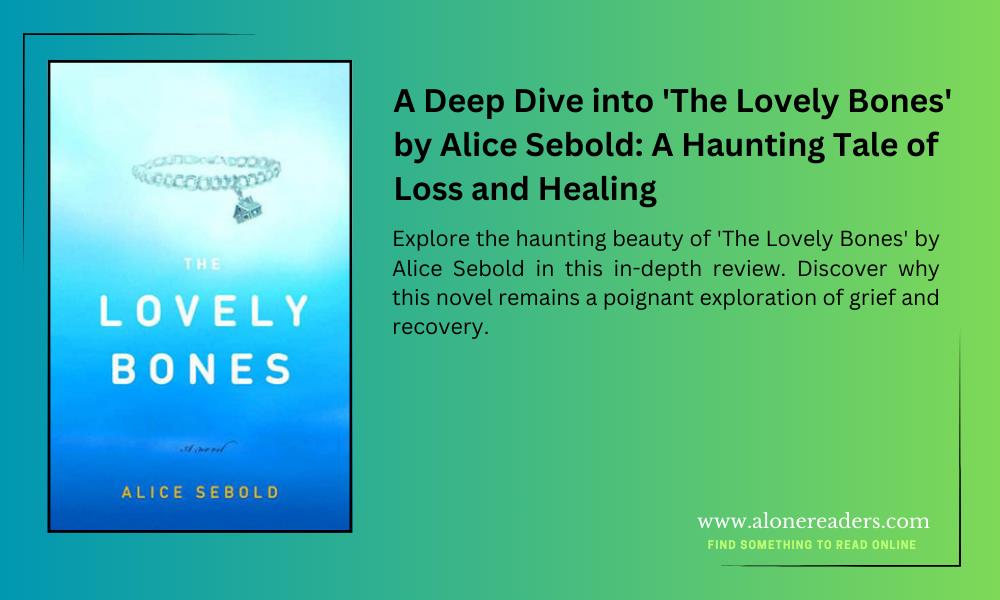
Alice Sebold's "The Lovely Bones" is a masterful exploration of grief, loss, and the human spirit's resilience. This haunting tale begins with the murder of 14-year-old Susie Salmon, who narrates the story from her personalized heaven. Through her eyes, readers are taken on a journey that is both heartbreaking and uplifting, as Susie watches over her family and friends, grappling with her untimely death while yearning for justice and peace.
Sebold's storytelling is both vivid and evocative, painting a poignant picture of Susie's afterlife, which is tailored to her own desires and memories. This unique perspective allows the author to explore the themes of loss and healing in a way that feels both personal and universal. The afterlife that Sebold crafts is neither traditionally religious nor wholly fantastical, but rather a space where Susie finds solace and reflection, while still tethered to the world she left behind.
The impact of Susie's death ripples through her family and community, each character's journey towards acceptance and recovery poignantly depicted. Her father, Jack, becomes obsessed with finding her killer, his life consumed by the need for justice. This obsession strains his relationships and highlights the profound impact of unresolved grief. Susie's mother, Abigail, withdraws emotionally, her escape into an affair underscoring her inability to cope with the tragedy. Sebold skillfully captures the complexities of grief, showing how it can both fracture and, ultimately, bring families closer together.
One of the most compelling aspects of "The Lovely Bones" is Sebold's portrayal of the Salmon family's struggle to move forward while holding onto their memories of Susie. Lindsey, Susie's younger sister, grows up under the shadow of her sister's death, navigating her own path to adulthood while bearing the weight of her family's expectations and sorrow. The evolution of her character is a testament to Sebold's ability to create multi-dimensional, relatable characters.
Sebold also delves into the psyche of Susie's murderer, George Harvey. His portrayal is chilling and unsettling, offering a stark contrast to the warmth and love that pervades Susie's family. Harvey's character is a reminder of the darkness that can lurk beneath seemingly ordinary facades, adding a layer of tension and urgency to the narrative.
The novel's pacing is deliberate, allowing readers to fully immerse themselves in the emotional landscape Sebold has created. Her prose is lyrical and haunting, capturing the fragility of life and the enduring power of love and memory. Sebold's ability to weave together the ethereal and the mundane creates a reading experience that is both profoundly moving and thought-provoking.
"The Lovely Bones" is not just a story about a young girl's tragic death; it is a meditation on the ways in which love and memory can transcend even the greatest of losses. Susie's narration from the afterlife provides a unique vantage point, one that allows readers to see the world through her eyes and understand the depth of her family's pain and resilience. This perspective is both heart-wrenching and hopeful, as Susie ultimately finds peace and helps guide her family towards their own healing.
Sebold's exploration of the afterlife is both imaginative and comforting, offering a vision of what lies beyond that is both personal and universal. It is a reminder that even in death, there is the potential for growth and understanding. Susie's journey is one of acceptance and forgiveness, both for herself and for those she left behind.
In conclusion, "The Lovely Bones" by Alice Sebold is a beautifully crafted novel that delves deep into the themes of loss, grief, and the enduring power of love. Its haunting narrative and richly developed characters make it a timeless exploration of the human condition. Sebold's prose is both poetic and precise, creating a story that lingers long after the final page is turned. For anyone who has experienced loss or is seeking a deeper understanding of the complexities of grief, "The Lovely Bones" is a must-read.